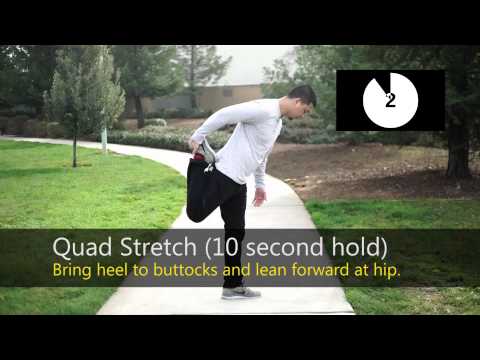Workers in manufacturing settings frequently have physically demanding jobs that can be almost as arduous as that of a professional athlete. Here’s how using sports-based techniques in facilities can minimize the risk of injury.
Most of us who are physically active know that the best way to prevent a sports injury is to warm up properly and stretch beforehand.
Cold muscles are susceptible to overstretching and injury, while muscles that have been warmed up before use are more flexible. They can more easily absorb sudden movements such as bends and lifts, making muscular injury a far less likely occurrence.
It makes sense then, that workers in very physical jobs should consider training just like a professional athlete, including understanding proper lifting techniques and muscle conditioning exercises.
Workers who use poor body mechanics and lifting techniques are prone to musculoskeletal disorders, or MSDs—a growing problem in the manufacturing sector.
Overexertion—defined as working beyond one’s physical capabilities—is the costliest cause of workplace injuries nationwide, according to the 2021 Liberty Mutual Workplace Safety Index, costing businesses some $13.3 billion per year. The index tallies the leading causes of the most serious workplace accidents that mean an employee misses more than five days from work.
Not using the proper technique for an activity, or having a poor stance or posture, places excessive stress on workers’ bodies, increasing fatigue and impairing a worker’s ability to recover from injury. Not using the correct equipment can also increase a worker’s risk for injury.
Manufacturers can employ basic (and proactive) sports medicine principles that professional athletes use to warm up to help avoid workplace injuries. These techniques and approaches can protect your employees from injuries and make your workplace happier, safer and more productive.
Read more: OSHA Recordable vs. Reportable Incidents: How to Tell the Difference

No. 1: Daily Warm-Up Exercises
Just as athletes generally have to warm up to get more blood and oxygen to the muscles, making them less prone to injury, manufacturing companies can consider establishing pre-work warm-up exercises to keep workers safe.
Organizations that incorporate stretching into their employees’ daily routines have reported positive results including improved employee morale and engagement, and even reductions in the number of worker incidents, according to a report in Occupational Health & Safety (OH&S) magazine.
The report cites one environmental, health and safety director who said his company added a stretching component to its process and saw “a 30 percent reduction in workplace incident rates after stretching was added.”
The OH&S article also cites research that suggests there may be a “psychological benefit” to a workplace stretching program. Bringing managers and workers together in a space doing a common activity “can create bonding and increase workplace morale,” creating “the perception of caring and support felt by employees from management,” according to the report.
The video link above shows a potential daily warm-up routine from Cardinal Health, an American healthcare services company. While the ergonomic stretches shown may be adequate and a good starting point, managers may also want to continually fine-tune their stretching programs over time as they gather more information about what works and what doesn’t.
Video: Building a Safer Workplace with MSC

No. 2: Understanding Workplace Ergonomics
Companies that have a comprehensive ergonomics program, and incorporate regular appraisals to stay aware of potential problems so they can act before they get worse, can help reduce the number and severity of musculoskeletal injuries in their workplaces.
Training programs, such as this one offered by the National Safety Council, can help you “recognize risk factors, conduct an ergonomic worksite analysis, evaluate and rank hazards, and select appropriate control methods” for keeping employees free from ergonomic injuries.
Repetitive motion and overexertion are significant risk factors in manufacturing workplaces. Understanding how to recognize those risks can keep your workers safe and injury-free.
As the video above shows, the aim of ergonomics in manufacturing is to design workspaces and workstations that encourage healthy work postures and maintain worker comfort and safety.
Solutions may include improving workstation design to minimize potential injuries from sitting over long periods, using flooring to minimize fatigue from standing for prolonged periods, or investing in help from robots and other technological innovations.
It’s also important to note that while traditional manufacturing and industrial ergonomics has focused on reducing a worker’s physical fatigue and discomfort to lessen safety hazards, more modern assessments are looking at “cognitive ergonomics,” which essentially means considering the cognitive load placed on workers.
The idea is that a significant “cognitive load” can have a detrimental impact on a worker by slowing performance and increasing errors. As employees do more work with technology and other sophisticated tools, there’s less emphasis on physical strength and a greater need for problem-solving and reasoning skills.
Read more: The Benefits of Focusing on Ergonomics in the Manufacturing Industry

No. 3: Developing a Successful Stretching Program
Establishing a successful workplace stretching program is a smart investment for organizations looking to minimize disruption from injuries.
When looking to implement a program, key elements to consider may include securing buy-in and support from company leaders, and developing a stretching program best suited to your organization’s needs.
Leadership buy-in and support are important because, as OH&S notes, “taking valuable time from the day’s production can be a tough sell for stretching program advocates,” so having upper management support can be instrumental in making this happen.
It’s also important to show company leaders the return-on-investment (ROI) data that demonstrates that the stretching program is having a meaningful impact on injury occurrences and can bring a meaningful ROI to the company.
A daily stretching program can also help managers identify workers who might develop MSDs, notes OH&S.
“When a team is gathered for the daily pre-shift stretching, it’s a great opportunity for an observant supervisor to dig a bit deeper with an employee, should the supervisor notice something amiss,” the article notes. “If an employee is struggling with an exercise or appears to be in discomfort, the supervisor can have a quick conversation to find out what’s going on. Addressing those early tells of a potential WMSD is crucial to preventing a mild strain from evolving into a permanent and irreversible injury.”
For more information on preventing MSDs, visit the Occupational Safety and Health Administration’s (OSHA) page on ergonomics and MSD prevention.
How are you making sure your employees are free from injuries—especially MSDs—at work? What steps are you taking to improve workplace ergonomics? Share your thoughts in the comments below.
Related Articles

Why Fall Protection Remains One of the Most Persistent Challenges in Workplace Safety

Warehouse Safety Guidelines and Rules

Beyond Padlocks: The Future of Complete Lockout Solutions

Maximizing Operational Efficiency: The Critical Role of Hygiene in Industrial Facilities


